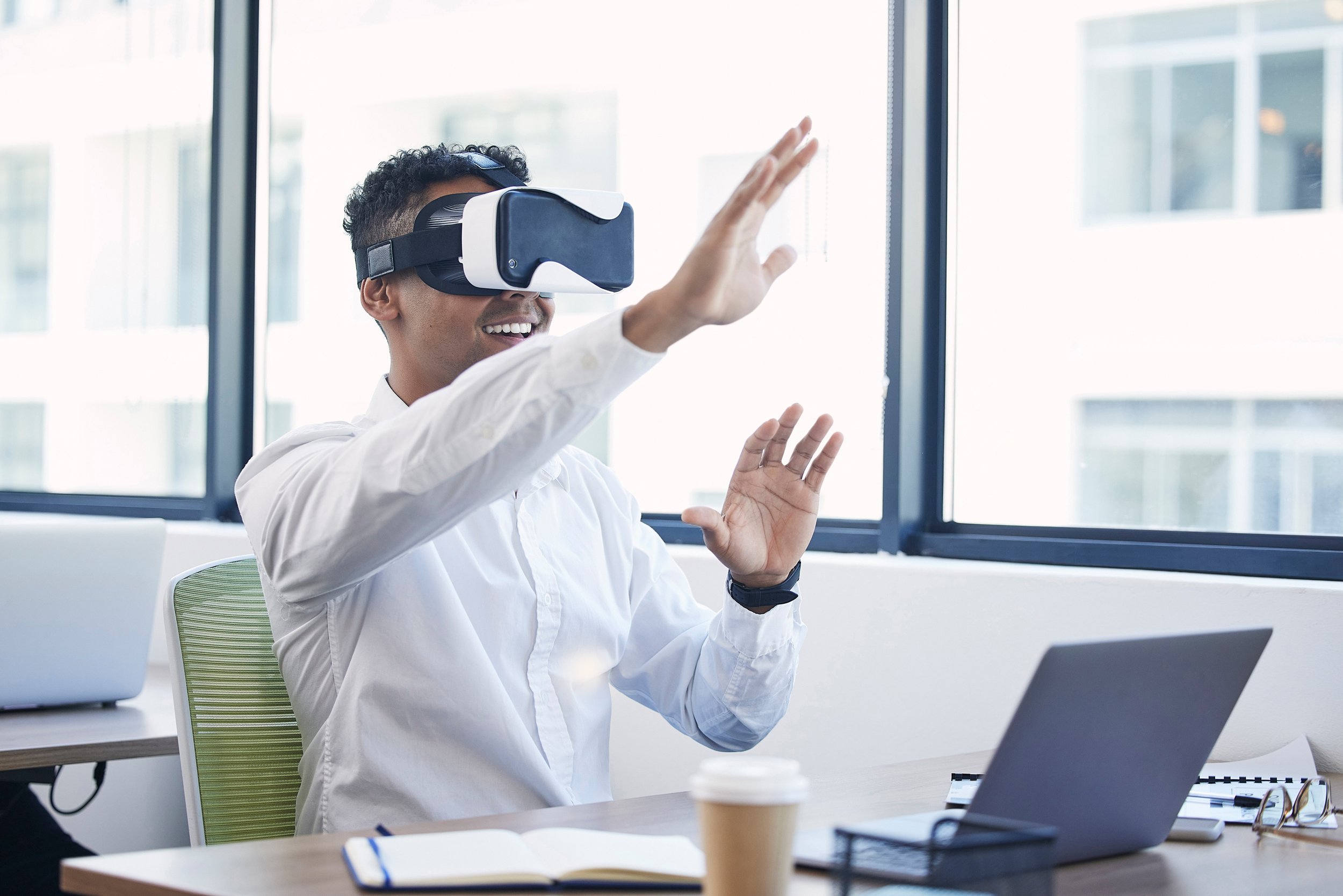
Capital XR
Capability
Capital XR uses the power that modern technology brings to achieve distributed learning outcomes. Our team develops solutions to provide cutting edge digital experiences across the full spectrum of services from instructional design to production and technical services.
Capital XR is a diverse team of teaching, graphics, systems, and production experts; here to help build and deliver world-class digital learning solutions. We are driven by the delivery of high-quality learning products, and it is our mission to support and develop the future of accessible education. We believe in making effecting learning available to anyone, anywhere, anytime through the innovative use of technology. We offer our clients customised solutions that best suits their needs. This flexibility ranges from large-scale training platforms to design and implementation for enterprise education. Capital XR empowers users to develop and deliver training designed in-house.
Steps to Developing a VR Product
XR solution implementation is easy and cost effective, even for the most complex systems, using our 6 Phase Development Process.
Phase 1 – Capture of System 3D models
We capture a range of 3D objects and scenes from video and photo footage of actual systems. If there is CAD data or product design data and specifications, then this stage has a number of variabilities. To provide the optimal experience, details of the interior are critical. We required the exact procedures and checklists provided to students. We work with you to ensure the accuracy of all the features and procedures, to the required specifications.
Phase 2 – Creation of 3D Objects and Design of Procedures
Once the information is assembled, our team of 3D artists create or augment the required 3D objects. The development team set up the training support objects (panels, teleport markers, animations etc) that have been defined.
Phase 3 – Technical Creation
This phase covers the technical creation of the detailed requirements. This includes functions such as opening doors, turning dials, adjusting load etc. At this point it is the attention to the details in the activities that creates the simulation of the external world experience.
Phase 4 – Recording of Tutorials
In this phase the trainers or subject matter experts create specific recordings that are to be provided to the learner. This Is created through a VR Headset, which has both facial expression tracking, as well as eye tracking, and does provide excellent digital output.
Phase 5 – User Acceptance Testing
We provide the training team with access to 'release build'. Here the trainers and experts access the build at key points of development and provide critical feedback that ensures we are on the path to delivering to the agreed standards.
Phase 6 – Publishing
When an update is created, that update is published to the relevant applications. The upgrades to the base systems will always create an upgrade in every client system.
Case Studies
Electrical Substation Entry VR Training Experience
XKG staff created a training solution that allowed high risk operations to be conducted where control centre staff to interact with real time voice in an immersive solution for field technicians to enter a substation, carry out isolations and conduct maintenance. The solution allowed instructors to configure questions and objectives in the experience, and to playback and examine exactly what the students did, what they looked at, and the results of any questions posed to them in the experience through a comprehensive experience analytics platform.
Digital Reality Pilot Procedural Training
XKG Developed a procedural training solution for Learn2fly. The purpose of the solution is to instruct trainee pilots on the procedural aspects of aircraft operations. In the training experience, trainees are required to carry out: External inspections including engine oil, fuel sampling and control surface checks. Internal checks including startup, system alignment, run-up checks, taxi checks, and landing checks. The solution reduces the instructor time required to bring trainee pilots up to the required standard and reduces costs.
RapidKAT
RapidKAT is a digital twin of a communications trailer specifically designed for remote areas, mining exploration and mine sites. The RapidKAT replica model has been built from originating CAD Data as a 3D VR asset to be used for training operators in the set-up, close-down and maintenance of the trailer and the communications equipment. The trailer is detailed to the level required to optimise the training experience, and to enable RapidKAT customers to undertake risk assessments, training and simulation scenarios and activities, without the need to have a trainer or the asset ‘in the room’. Through using the digital twin, the training costs of the asset are lowered while efficiency in training and collaboration increased. This gave RapidKAT customers an increase in capacity while maintaining and improving practice on the ground.
Bulk Fuel Pump and Storage (BFPS) Assembly
XKG is partnering with Army Logistics Training Centre (ALTC) to bring a low cost and high impact VR innovation to Defence whilst providing significant savings in operations. CapitalXR is providing both a 3D digital twin of relevant Army equipment which can be used in immersive training and simulation. This provides a customised training solution to ALTC's that includes tutorials from trainers, users and other relevant SME's recorded in VR, and other learning support elements. In this training trainee operators of the equipment and systems learn the features and maintenance procedures, while current operators can undertake refresher programs. The training material can be delivered as stand-alone programs via various VR headsets, desktop applications or mobile devices (Apple and Android).
